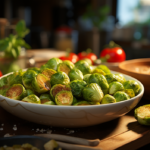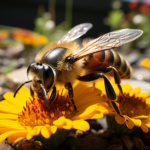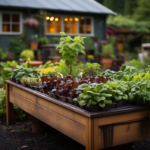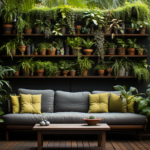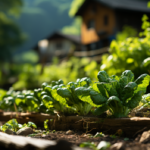Table of Contents
Get Expert Tips and Tricks for Maximizing Pepper Yields and Flavors in Your Garden Space
Growing peppers in your home garden can be a fun and exciting way to add some spice and variety to your meals. Whether you’re a seasoned gardener or a beginner, this guide will give you all the information you need to grow your own delicious peppers. With just a little bit of time and effort, you can cultivate a bountiful harvest of fresh peppers, from sweet and mild to hot and spicy. We’ll cover everything from selecting the right pepper varieties for your garden to preparing your soil and caring for your plants throughout the growing season. So grab your gardening gloves and let’s get started!
Selecting the Right Pepper Varieties
When it comes to growing peppers in your home garden, selecting the right varieties is crucial. Here are some factors to consider when choosing the perfect pepper plants for your garden:
Heat Level
One of the first things to think about is the heat level of the peppers you want to grow. If you’re new to gardening or you’re not a fan of spicy foods, you may want to start with milder varieties like bell peppers or banana peppers. If you enjoy a bit of heat, try growing jalapeno peppers or cayenne peppers. And if you’re a true heat-seeker, you might want to go for the Carolina Reaper or Ghost Pepper, some of the hottest peppers in the world.
Plant Size
Another important factor to consider is the size of the pepper plants you want to grow. If you have limited garden space or you’re growing peppers in containers, you’ll want to choose smaller varieties that won’t take up too much room. A few options include cherry peppers, which are great for small spaces because they grow on compact plants, or mini bell peppers, which are perfect for container gardening.
Shape and Color
Peppers come in a variety of shapes and colors, so think about what types of peppers you want to grow based on their visual appeal. Bell peppers come in green, red, yellow, and orange and add a burst of color to any garden. Banana peppers are long and skinny with a bright yellow color, and jalapenos are small and green, while cayenne peppers are long and red.
Disease Resistance
Finally, when selecting your pepper varieties, it’s also important to choose plants that are resistant to common pepper diseases. This can help ensure that your plants stay healthy and produce a bountiful harvest. Some disease-resistant varieties include the California Wonder bell pepper and the Early Jalapeno pepper.
By considering these factors, you can find the perfect pepper plants for your home garden and get started on the journey of growing your own fresh, flavorful peppers.
Preparing Your Garden Soil
Having rich, fertile soil is crucial to growing healthy and delicious peppers in your home garden. Here are some essential aspects to consider when preparing your soil:
Test Your Soil pH
Peppers thrive in soil with a pH range of 6.0 to 7.0. If your soil’s pH level is too low, adding lime will raise it, while adding sulfur will lower it if it is too high. Conducting a soil test will give you a clear indication of your soil’s pH level.
Chemical Composition
Peppers also require several essential nutrients to grow healthy. Nitrogen is essential for healthy growth, while phosphorous and potassium increase fruit yield. To improve nutrient content, consider adding organic matter to your soil, such as compost or well-rotted manure.
Soil Structure
Peppers need well-draining soil to thrive. Overly compact soil prevents water and nutrient absorption and can lead to root rot or stunted growth. If your soil is heavy clay, adding perlite or sand can improve drainage.
Amend Your Soil
If your soil is deficient in nutrients or has undesirable properties, amending your soil before planting peppers is recommended. You can amend your soil by adding compost or organic fertilizers. Organic fertilizers, such as fish or kelp meal, are excellent for providing all the essential macro and micronutrients peppers need.
In summary, growing healthy and delicious peppers requires having soil that promotes healthy growth. Conduct a soil test, add organic matter, and amend your soil as needed to ensure the ideal chemical composition, soil structure, and pH level. By taking care of these essential aspects, you can create an optimal environment for your peppers to grow and thrive.
Starting Pepper Seeds Indoors
Preparing your garden soil is one of the most important steps in growing healthy and fruitful pepper plants. In this article, we’ll outline everything you need to know to get your soil prepped and ready for planting.
Test Your Soil
Before you start any preparations, it’s a good idea to test your soil for pH levels and nutrient content. Most garden centers offer soil testing kits or you can also send soil samples to a local agricultural extension to get tested. This will let you know if there are any imbalances or deficiencies in the soil, and help you select the right amendments to correct them.
Amend Your Soil
Pepper plants thrive in nutrient-rich soil that’s well-draining and has a pH level of 6.0 to 6.8. If your soil needs an adjustment, you can amend it with a variety of organic matter, such as compost, aged manure, or peat moss. These materials will improve soil structure, increase water retention, and provide essential nutrients for your peppers.
Add Fertilizer
Pepper plants need nitrogen, phosphorus, and potassium to grow. Once your soil is prepped and amended, adding some well-balanced fertilizer that’s formulated for vegetables will help your peppers flourish. You can use a slow-release granular fertilizer that will feed your plants over time and avoid the risk of over-fertilizing.
Choose the Right Location
Pepper plants love warm weather and need plenty of sunlight. Choose a location in your garden that gets at least six hours of sunlight per day. If you live in an area with cooler summers, you can plant them next to a south-facing wall or in containers that can be moved around to follow the sun.
By following these essential steps, you can create the perfect environment for your pepper plants to grow and thrive. Remember, the better the soil, the better the peppers!
Transplanting Pepper Seedlings Outdoors
If you’ve successfully started pepper seeds indoors, it’s time to transplant them into your garden. Planting pepper seedlings is a delicate process, but with the right techniques, you can ensure a successful transition for your young plants.
Choosing the Right Time for Transplanting
One of the most critical factors to consider when transplanting pepper seedlings outdoors is the timing. It’s essential to wait until your pepper seedlings are big and strong enough to survive the move. Pepper plants are quite sensitive to weather conditions and temperatures, so do not plant seedlings until the danger of frost has passed. Wait at least two weeks after the last frost to ensure that the soil and air temperatures are warm enough to support plant growth.
Preparing the Garden Bed
Here are some key steps to prepare your garden bed for transplanting pepper seedlings:
- Clear the area of weeds and debris
- Loosen the soil with a garden fork or tiller to allow for proper root development
- Work in some organic matter, like compost or manure, to provide added nutrients
- Create small mounds of soil one to two feet apart to accommodate each pepper seedling
It’s essential to ensure that the seedlings remain moist before transplantation.
Transplanting Pepper Seedlings
Once your seedlings have grown to about 3-4 inches tall and have two sets of leaves, you’re ready to transplant them. Follow these steps to transplant your pepper seedlings successfully:
- Dig a hole in the center of each mound
- Gently remove each seedling from the pots
- Place each seedling in a prepared hole, and gently firm the soil around the base of each plant
- Water each plant thoroughly, being careful not to over-saturate the soil
- If necessary, cover the transplanted seedlings with a temporary cover to protect them from birds, insects, and adverse weather conditions.
Caring for Pepper Plants
Once you have transplanted your pepper seedlings, it’s crucial to care for them properly. Here are some simple tips to help ensure a bumper pepper harvest from your garden:
- Consistently water your plants, providing them with one inch of water each week or more in the heat of the summer.
- Fertilize your pepper plants every three to four weeks with an all-purpose vegetable fertilizer
- Stake your plants if necessary to support the weight of the growing peppers
- Monitor the pepper plants for pests and diseases, such as aphids, mites, and fungus, and take appropriate measures to control them.
Following these simple steps will ensure your pepper plants thrive and produce a healthy harvest. Remember that growing peppers requires persistence and patience. With time, practice, and experience, you’ll quickly become a master at growing your peppers from start to finish.
Conclusion
Growing peppers at home can be a rewarding and satisfying experience. With the right pepper varieties and proper care, you can enjoy a bountiful harvest of fresh and delicious peppers. Remember to select the right pepper varieties for your garden, prepare your soil, start your seedlings indoors, and transplant them outdoors when they are strong enough. Pay attention to your plants’ needs throughout the growing season, and watch for signs of pests and diseases. With a little bit of patience and hard work, you’ll be enjoying the fruits of your labor in no time. So get your gardening gloves on, and start growing!



